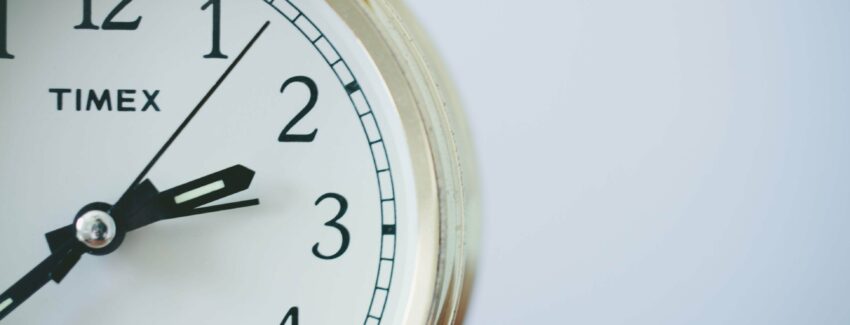This article was originally published in the Massachusetts Senior Games Program Book 2020.
Every tissue and organ in your body operates according to biological rhythms. The circadian “body”‘ clock is the 24-hour cycle that regulates many physiological processes including sleeping, eating, and body temperature. Many factors affect this internal body clock including light and time cues. Many organisms, including people, animals, fruit flies, and even bacteria, are governed by circadian rhythms. Your exposure to light, both natural sunlight and artificial indoor lights, affects your circadian rhythm.
The body clock undergoes many changes as a person ages. The clocks of newborn babies induce them to sleep approximately 16 to 20 hours per day. Between the ages of 1 and 4, the need for sleep decreases to approximately 11 to 12 hours per day. Teenagers need approximately 9 to 10 hours of sleep daily. A typical adult will feel well rested by getting 7 to 9 hours of sleep per night. Older adults over the age of 65 may need up to 8 hours of sleep per night but may suffer from sleep problems like frequent nighttime awakening or waking up too early in the morning.
Exercise has been known to cause shifts in the circadian clock however very little is known about this effect. But according to new research published in The Journal of Physiology, exercise can shift the human body clock, with the direction and amount of this effect depending on the time of day or night in which people exercise. These findings suggest exercise could counter the effects of jet lag, shift work, and other disruptions to the body’s internal clock (e.g. military deployments) helping individuals adjust to shifted schedules. This study found that exercising at 7 am or between 1 and 4 pm advanced the body clock to an earlier time and exercising between 7 and 10 pm delayed the body clock to a later time. Exercising between 1 and 4 am or at 10 am, however, had little effect on the body clock, and the phase-shifting effects of exercise did not differ based on age nor gender. The researchers at University of California, San Diego and Arizona State University examined body clocks following exercise in 101 participants for up to five and a half days.
Exercise in the morning
Early morning is a great time to get outside and start moving with an aerobic activity. A brisk walk, or any outdoor activity in the presence of bright daylight, is an excellent way to synchronize the brain clock, making it a way to beat any form of jet lag or help you recover from sleep deprivation. It is also an important mechanism for maintaining and enhancing brain function. First, it will improve your mood for the rest of the day. Also, exercise stimulates new brain cell production and your ability to make new neuronal connections for deeper learning and more memory. We also know that exercise helps repair damaged brain cells by improving the neurons’ ability to repair their own DNA. This damage repair extends to the plaques in the brain that are found in those who have Alzheimer’s. It doesn’t matter whether you wait until sunrise to start your morning walk, run, swim, or cycle. You can start anywhere from 30 minutes to 2 hours before or after sunrise. This bright light will activate the blue light sensors in your eyes, and as you exercise, the sensors will fire up your brain. If you exercise in a gym in the morning, don’t choose the darkest corner of the room. Instead, find a spot that is next to a large glass window or under bright light.
Exercise in late afternoon
Another great time for physical activity is at dusk or in the late afternoon, starting from 3 pm to dinnertime. This is when muscle tone begins to rise, so it’s the best time for strength training, including weightlifting, or vigorous exercise like intense indoor cycling. High-intensity athletes and those trying to optimize their physical fitness will find that exercising before dinner followed by a protein-rich meal will help them repair muscle, build muscle mass, and promote recovery. The circadian component to this aspect of peak performance may come from various internal clocks. The muscles absorb and use nutrients in the late afternoon, when repair occurs. The brain’s function involving motor coordination is typically high during the day, which further aids sports performance. Blood flow and blood pressure are also high in the afternoon, which might improve better oxygenation of muscles. There is also a circadian rhythm for exercise performance. Athletic performance, even among competitive athletes, can vary by as much as 25 percent within a day. If you are aiming to get maximum benefit from exercise with minimum injury, the afternoon is the best time to exercise. There are numerous studies showing motor coordination and strength peaks around late afternoon.
Exercise after dinner
If you cannot exercise in the morning or afternoon, evening exercise is better than nothing, and it has its own set of specific benefits that affect your circadian code for metabolism and maintaining blood sugar levels. Physical activity increases demand for glucose, and muscles can soak up a good amount of blood glucose, thereby reducing the blood glucose spike after an evening meal so that you will be in a normal physiological range. Yet not all exercise at night is a good idea. It’s best to do your extreme activity or high-intensity exercise before dinner. Late-night exercise in a gym or on a treadmill can increase cortisol to morning levels and delay the nightly rise of melatonin, the sleep hormone. Intense exercise also raises body temperature and heart rate. All of these factors interfere with your ability to go to sleep. Taking a shower before bedtime can help your body cool down, which will help you get to sleep.

